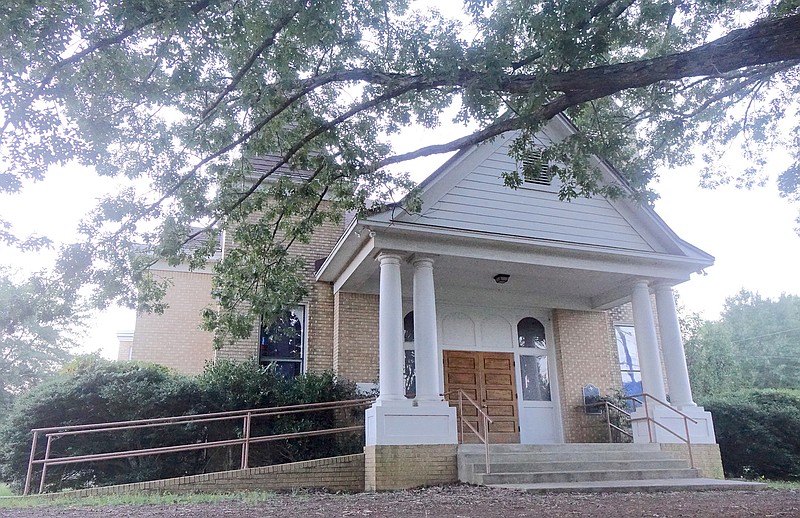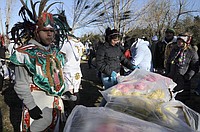The Methodists of Douglassville have marked their claim of history upon the town by having used petrified wood in several outdoor structures.
The church's name sign, fencing, flag pole base, picnic table, patio stove and table are built with the ancient wood, which gives a distinctive appearance if not actual proof of longevity.
Douglassville is one of Cass County's oldest towns and one of the few built on a hill. Its elevation at 394 feet above sea level is 135 feet higher than that of Atlanta's.
The pretty church shares a distinguished past, which the visitor seems to sense when driving up the hill from either State Highway 77 or along the wide and pleasant State Highway 8, which in its beginnings once led to Petty's Ferry Crossing over the Sulphur River.
The church has been remodeled twice and rebuilt once since its 1856 start when it first had four columns, two spires, a belfry and bell. It lost its columns for a period but never its bell, which used to be rung in friendly competition with the Douglassville First Baptist Church and its bell just across the street.
Almost everything about the church seems to relate to families and history. Many of these family names were Snipes, Swints, McCoys, McCalls, Frosts, Granberrys, Heaths, McWhorters and others.
When new additions, improvements and repairs have been made, they have been paid in advance and appropriately dedicated if not by plaques or print, then in memory.
Outside, the church's name sign in front, a gateway at the side and the commemorative flag pole in the memorial park at the rear are made from petrified wood thought to have been obtained from the Sulphur River beds nearby and in Arkansas.
Marjorie McWhorter, in writing her history in 1975 of Douglassville, said of the town:
"Douglassville is a close-knit community: the native's pride in their progenitors amounts almost to ancestor worship. The descendants may leave home for years, but they always come back, if not to retire, at least to be interred in the quiet peaceful cemetery along with the bones of their forefathers."
If one should stop to notice the use of petrified wood, notice, too, that Methodist tree at the front door which is, indeed, awesome. The spreading white oak overflows the church front, hiding the building itself.
Arriving underneath its sheltering limbs, maybe even parking and stepping out right at the church's front steps, is like a welcomed greeting from the congregation.
That tree is cared for and has history. David Frost remembers that someone ran over the young tree in a car years ago, knocking out its center growth limbs. So the tree limbs started to spread outward instead. And, indeed, it seems more wide than tall.
In 1973, the church was designated as a Texas Historical Landmark. Former resident and then U.S. Senator John Tower came to speak. His mother Beryl lived in the nearby Midway community. The Towers had been a Methodist preaching family.
The spacious sanctuary with vaulted ceiling is painted in two colors, which adds height and depth. The room is lighted by six stained glass windows, unique by being outlined in color yet frosted with snow white engraved Biblical scenes.
More than 30 names are the dedicatees on these windows.
Today, the church remains at Douglassville's center, and its outdoor structures still reflect with its petrified wood the history of the church and world.


